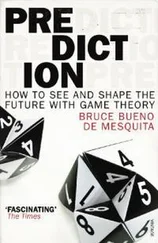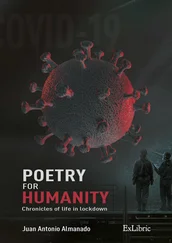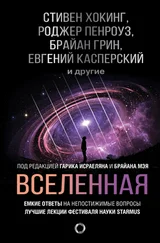Chris D. Thomas, Inheritors of the Earth (London: Allen Lane, 2017).
Steven Pinker, The Better Angels of Our Nature: Why Violence Has Declined (New York: Penguin Books, 2011).
Freeman Dyson, Dreams of Earth and Sky (New York: Penguin Random House, 2015).
An overview of these developments is given in Murray Shanahan, The Technological Singularity (Cambridge, MA: MIT Press, 2015); and Margaret Boden, AI: Its Nature and Future (Oxford: Oxford University Press, 2016). A more speculative ‘take’ is offered by Max Tegmark, Life 3.0: Being Human in the Age of Artificial Intelligence (New York: Penguin Random House 2017).
David Silver et al., ‘Mastering the Game of Go without Human Knowledge’, Nature 550 (2017): 354–59.
https://en.wikipedia.org/wiki/Reported_Road_Casualties_Great_Britain.
The letter was organised by the Future of Life Institute, based at MIT.
Stuart Russell is quoted from the Financial Times , January 6, 2018.
See Ray Kurzweil, The Singularity Is Near: When Humans Transcend Biology (New York: Viking, 2005).
P. Hut and M. Rees, “How Stable Is Our Vacuum?” Nature 302 (1983): 508–9.
Derek Parfit’s arguments are presented in part 4 of his Reasons and Persons (New York: Oxford University Press, 1984).
Good surveys of these extreme risks are given in Nick Bostrom and Milan Ćirković, eds., Global Catastrophic Risks (Oxford: Oxford University Press, 2011); and Phil Torres, Morality, Foresight, and Human Flourishing: An Introduction to Existential Risks (Durham, NC: Pitchstone, 2018).
Quoted in Carl Sagan, Pale Blue Dot: A Vision of a Human Future in Space (New York: Random House, 1994).
Alfred Russel Wallace, Man’s Place in the Universe (London: Chapman and Hall, 1902)—this book can be downloaded free via the Gutenberg project.
Michel Mayor and Didier Queloz, ‘A Jupiter-Mass Companion to a Solar-Type Star’, Nature 378 (1995): 355–59.
The best information about the results from the Kepler spacecraft can be found on NASA’s website: https://www.nasa.gov/mission_pages/kepler/main/index.html.
Michaël Gillon et al., ‘Seven Temperate Terrestrial Planets Around the Nearby Ultracool Dwarf Star TRAPPIST-1’, Nature 542 (2017): 456–60.
Laser acceleration was discussed by the visionary engineer Robert Forward in the 1970s. More recently, there have been detailed studies by P. Lubin, J. Benford, and others. And the Starshot Project, supported by Yuri Milner’s Breakthrough Foundation, is seriously studying whether a wafer-sized probe could be accelerated to 20 percent of the speed of light, thereby reaching the nearest stars within twenty years.
Good introductions to the topic are Jim Al-Khalili, ed., Aliens: The World’s Leading Scientists on the Search for Extraterrestrial Life (New York: Picador, 2017); and Nick Lane, The Vital Question: Why Is Life the Way It Is? (New York: W. W. Norton, 2015).
There is a huge literature on pulsars, but an overview is given by Geoff McNamara, Clocks in the Sky: The Story of Pulsars (New York: Springer, 2008).
Fast radio bursts are intensively studied and ideas are fast changing. The best reference is Wikipedia, https://en.wikipedia.org/wiki/Fast_radio_burst.
A biography of Conway is Siobhan Roberts, Genius at Play: The Curious Mind of John Horton Conway (New York: Bloomsbury, 2015).
This essay can be found in Eugene Wigner, Symmetries and Reflections: Scientific Essays of Eugene P. Wigner (Bloomington: Indiana University Press, 1967).
The quote is from a classic 1931 paper by Paul Dirac titled ‘Quantised Singularities in the Electromagnetic Field’, Proceedings of the Royal Society A , 133 (1931): 60.
An excellent account of this discovery and its context is given by Govert Schilling in Ripples in Spacetime (Cambridge, MA: Belknap Press of Harvard University Press, 2017).
Freeman Dyson, ‘Time without End: Physics and Biology in an Open Universe’, Reviews of Modern Physics 51 (1979): 447–60.
Martin Rees, Before the Beginning: Our Universe and Others (New York, Basic Books, 1997).
David Deutsch, The Beginning of Infinity: Explanations That Transform the World (New York: Viking, 2011).
Darwin in a letter to Asa Gray written on May 22, 1860. Darwin Correspondence Project, Cambridge University Library.
William Paley, Evidences of Christianity (1802).
Parts of this section first appeared in Martin J. Rees, “Cosmology and the Mulitverse, in Universe or Multiverse , ed. Bernard Carr (Cambridge: Cambridge University Press, 2007).
John Polkinghorne, Science and Theology (London: SPCK/Fortress Press, 1995).
E. O. Wilson, Letters to a Young Scientist (New York: Liveright, 2014).
Karl Popper’s key work on the scientific method is The Logic of Scientific Discovery (London: Routledge, 1959)—a translation of the original German version published in 1934. In the intervening years, Popper enhanced his reputation with his deeply impressive contribution to political theory: The Open Society and Its Enemies .
P. Medawar, The Hope of Progress (Garden City, NY: Anchor Press, 1973), 69.
T. S. Kuhn, The Structure of Scientific Revolutions (Chicago: University of Chicago Press, 1962).
The accessible book The Meaning of Science , by Tim Lewens (New York: Basic Books, 2016), offers a clear critique of the viewpoints of Popper, Kuhn, and others.
Jared Diamond, Collapse: How Societies Choose to Fail or Succeed (New York: Penguin, 2005).
Lewis Dartnell, The Knowledge: How to Rebuild Our World from Scratch (New York: Penguin, 2015). Books such as this are educative. It’s surely regrettable that so many of us are ignorant of the basic technologies we depend on.
William MacAskill, Doing Good Better: Effective Altruism and How You Can Make a Difference (New York: Random House, 2016).
The Future of Man (1959).
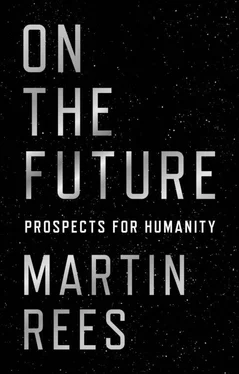
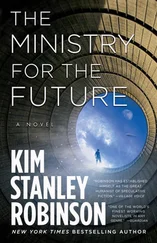
![Мартин Рис - Всего шесть чисел. Главные силы, формирующие Вселенную [litres]](/books/414169/martin-ris-vsego-shest-chisel-glavnye-sily-formir-thumb.webp)
